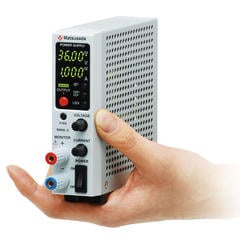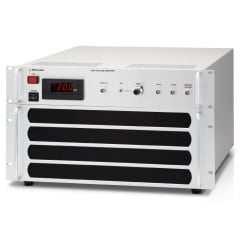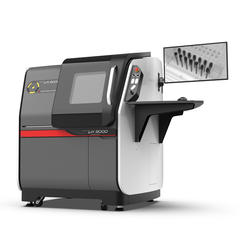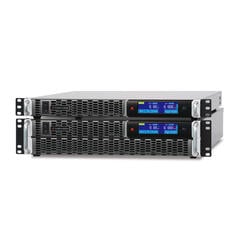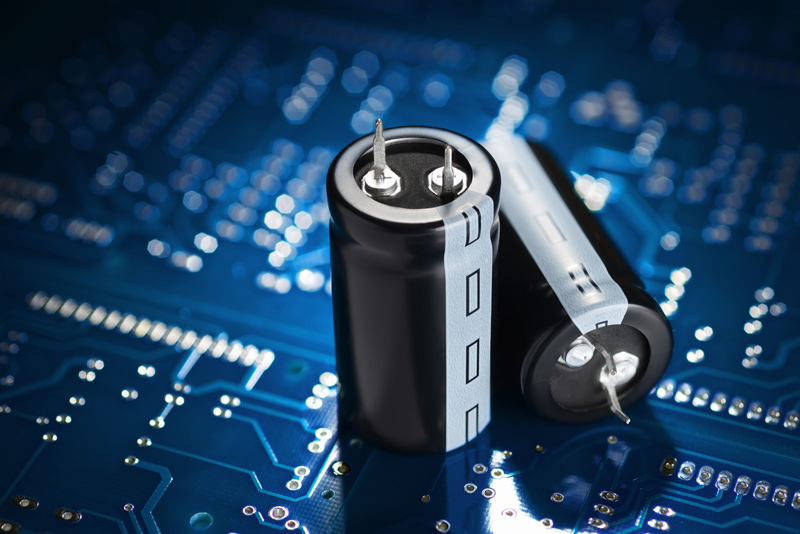
Perfect partner for electronics
Capacitors are crucial components in most electronic devices. They are widely used in electronic circuits, power circuits, power supply units, etc.
Capacitors are considered as one of the Big Three Passive Components, along with resistors and inductors, which form the basic electronic circuits. Passive components are electronic devices that consume, store, and/or release electricity.
Unlike integrated circuits (ICs), they do not perform active operations where low power is amplified to output power constantly. Capacitors are simple components that receive and supply electricity. However, these passive components are crucial for accurately performing active operations.
The three main passive components are also known as LCR, which stands for Inductor, Capacitor, and Resistor.
Basic Structure of a Capacitor with Two Metallic Plates and an Insulator

A capacitor typically consists of an insulator with two metal plates attached on both sides of the insulator. Insulators do not conduct current. The insulator used in capacitors is called a dielectric. The positive and negative charges are transferred within the conductor during the flow of electricity.
The charges flow through the capacitor when it is supplied with electricity, but this flow is blocked by the insulator between the metal plates. Consequently, the charges are accumulated in one of the two metal plates, while the other plate is induced with an opposing charge.
Therefore, the structure of the capacitors allows for electricity to be stored between the two metal plates. The materials used for the insulator include gases, oils, ceramics, and resin. The metal plates come in various shapes, including parallel plates, foil wrapping, and multi-layers. The number of stored charges and the supported frequencies vary based on the types of insulators or on the structure of the capacitors. Therefore, it is essential to select a suitable capacitor to meet the given requirements.
Importance of Capacitors
The operating principle of capacitors comprises two main parts:
- Storing the electric charges (electricity)
- Flow of AC instead of DC
For further details on electricity storage, please refer to the Basic structure of a capacitor.
As the electric charge is stored between the metal plates, the electric charge transfer is stopped, stopping the flow of DC. Essentially, DC can flow through the capacitors for a short period until they are fully charged. In the case of AC, the current direction is switched after a certain interval and the capacitor is charged and then discharged. Therefore, the electricity appears to be passing through the capacitor.
Accordingly, the higher the AC frequency, the easier the flow of electricity through the capacitors. Therefore, capacitors play the three following important roles in an electronic circuit.
1) Charging and discharging
Capacitors can charge and discharge because of the structure. Featured by the electric charge and discharge, capacitors also can be used as a power supply. Camera flashes utilize this feature of capacitors.
A high voltage must be applied to achieve a strong light-emitting capability. This high voltage is not required in the circuit for camera operations. Subsequently, a capacitor with a suitable structure is selected, which can achieve a high light emission power by instantly discharging the stored electric charges.
2) Maintaining the voltage at the same level
Capacitors are also used to maintain the voltage at a certain level. They are useful in reducing the voltage pulsation. When a high voltage is applied to the parallel circuit, the capacitor is charged, and conversely, it is discharged with the application of a low voltage.
While the electricity flowing out is AC, most electronic circuits work with DC. Therefore, AC is converted into DC using a rectifier circuit. However, the converted DC is an unstable current that includes ripples. A capacitor is used to remove these ripples and maintain a constant voltage.
3) Removing noise
The flow of AC in a capacitor is useful for noise reduction. In general, since the noise in DC is an AC component with high frequency, it tends to go through the capacitor easily.
A branch circuit is inserted between the input and output to form a ground connection in the capacitor. Consequently, only the AC component flows through the capacitor, and the DC component flows through the output circuit.
Types of Capacitors
- Aluminum Electrolytic Capacitor
- This capacitor is made of aluminum and another metal. An oxide film is used as a dielectric material since it blocks electricity by forming on the surface of the aluminum. This type of capacitor presents high capacitance at an affordable price. Therefore, it has been widely employed as a high-capacitance capacitor. However, it has drawbacks such as poor frequency characteristics, large size, and loss of dielectric due to liquid leakage.
- Tantalum Capacitor
- In this capacitor, tantalum is used for the anode and tantalum pentoxide is used for the dielectric material. It presents a relatively large capacitance despite being smaller than an aluminum electrolytic capacitor. Furthermore, this capacitor is superior to the aluminum capacitor in terms of leakage current characteristics, frequency properties, capacitance, and temperature characteristics.
- Electric Double Layer Capacitor
- These capacitors present an extremely large capacitance, which is more than 1,000 times to 10,000 times greater than that of aluminum electrolytic capacitors. They can be used repeatedly over a long period and do not face limitations such as the number of charge/discharge cycles. Electric double-layer capacitors have electric charges accumulated at the boundary of the electrolyte and electrode, which is known as an "electric double-layer," with the size of a single molecule. This layer is used as the dielectric material in double-layer capacitors. Electric double-layer capacitors are more expensive than other capacitors.
- Ceramic Capacitor
- This capacitor is typically divided into three types based on the types of ceramics used as the dielectric materials: low dielectric type, high dielectric type, and semiconductor type. Its capacitance varies with the increase in the voltage supplied to the capacitor. It is characterized by its small size and heat resistance. However, it is fragile and can be easily chipped or broken.
- Film Capacitor
- In this capacitor, films such as polyester and polyethylene are used as the dielectric material. Polyester, polypropylene, and other films are sandwiched between the electrode foils on both sides and are wound into a cylindrical shape. It is a nonpolar capacitor that is larger than the ceramic capacitor and presents high insulation resistance while preventing electric loss. Furthermore, it is highly reliable and presents excellent frequency and temperature properties.
- Mica Capacitor
- This capacitor employs mica, which is a natural mineral, as the dielectric material. Mica is ideal for capacitors because it has a high dielectric property and can be easily peeled off. Mica capacitors present excellent features such as high insulation resistance, dielectric loss tangent, and good frequency and temperature characteristics. However, they face certain drawbacks because they are expensive and large-sized units.
For further information regarding the types of capacitors, please refer to the link below.
Types of capacitors. Basic component knowledge
Related Technical Articles
Recommended products
Matsusada Precision's DC power supplies, high voltage power supplies, and X-ray inspection systems provide the best solutions for capacitor and electric component testing applications around the world.




